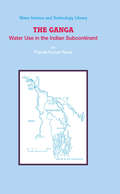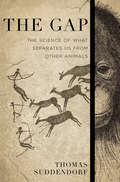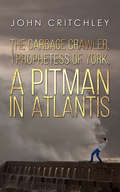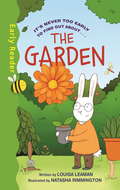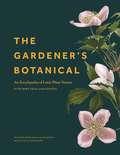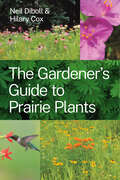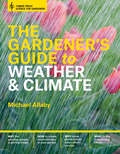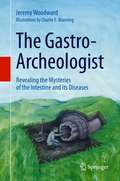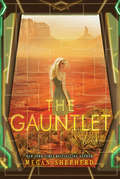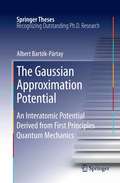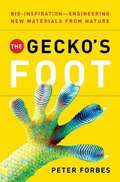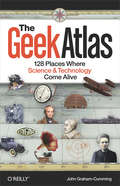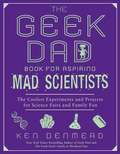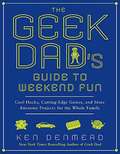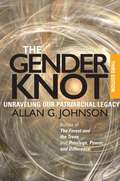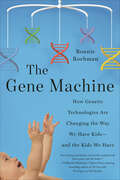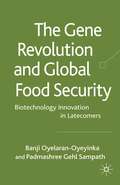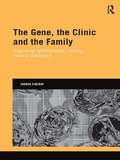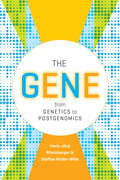- Table View
- List View
The Ganga
by Pranab Kumar ParuaThe geo-hydro-morphometry of the river Ganges has a history of long and wide variations as the river is continuously fed by the high Himalayas hill ranges, the highest in the world. The river is categorized as an international one, passing through several independent countries. The major flow of the river used to flow through the branch river, Bhagirathi-Hooghly on the banks of which both city and port of Calcutta (now renamed Kolkata) are situated. However, due to massive tectonic and morphological changes, the flow through the branch river has gradually decreased resulting in enormous damages to the port and the city. After more than a century of investigations on the probable causes of deterioration and its remedies, a barrage across the river had been constructed near a place called Farakka in the Murshidabad district of West Bengal, India for diversion of a part of lean season flow (40,000 cu secs) from the parent river to the branch river for the resuscitation of the branch river and revitalization of the port of Calcutta. The turmoil started since the construction of barrage between 1965-1975 and the major neighbouring countries, India and Bangladesh, were locked in the dispute over sharing the water of the parent river. After several rounds of discussions at different levels between the two countries, short-term agreements were signed two times, one in 1977 and the other in 1985, and finally one long term Treaty was signed in 1996 between the two countries in an atmosphere of peaceful co-existence. Audience: The book will be of interest to researchers and scientists, professionals and policymakers in water resources management and environmental science, conservation policy and development research.
The Gap: The Science of What Separates Us from Other Animals
by Thomas SuddendorfThere exists an undeniable chasm between the capacities of humans and those of animals, but what exactly is the difference between our minds and theirs? In "The Gap," psychologist Thomas Suddendorf provides a definitive account of what makes human minds unique and how this disparity arose. He proposes that two innovations account for all of the ways in which our minds appear so distinct: our open-ended ability to imagine and reflect, and our insatiable drive to link our minds together. It is not language or morality that set us apart, but the ability to consider a range of scenarios, real and imagined, past and future. A provocative argument for reconsidering our place in nature, "The Gap" is essential reading for anyone interested in our evolutionary origins and our relationship with the rest of the animal kingdom.
The Garbage Crawler, The Prophetess of York, A Pitman in Atlantis
by John CritchleyThe Garbage Crawler, The Prophetess of York, A Pitman in Atlantis are an enthralling trio of plays set for the radio and the stage, concerning myth, legend and science fiction. In The Garbage Crawler, we find Zachery, who has only ever known his room and the robotic voice that controls his life. He escapes into a sea of rat-infested, foul-smelling garbage through a chute, where he is discovered by a Finder. His destiny and that of the city he comes to come into question as he becomes a Finder himself and looks to liberate the city. Set in York in 1833, The Prophetess of York is 19-year-old Hannah Beedham, a self-professed 'common sinner'. She experiences a glorious vision of God himself, but the people of York denounce her as a drunk and a witch. However, local man James Sturdy believes her, as do some from all over who pay tribute to the 'Prophetess'. A Pitman in Atlantis sees John Bell fall from a sea defence wall in Yorkshire and wake up in a foreign hospital, only to find he has landed in Atlantis. He begins working in a silver mine in the underwater city while fellow Englishmen work to try and find a way for John to return to his wife and the world on the surface.
The Garden (Early Reader Non Fiction)
by Louisa LeamanEarly Readers are stepping stones from picture books to reading books. A green Early Reader is a first factbook.It's never too early to find out about... The Garden.Bugs and beetles, birds and plants, there's a world to be discovered and it's right on your doorstep. Beautifully illustrated in full colour on every page, this new Early Reader will show you the amazing possibilities of the great outdoors!
The Garden Politic: Global Plants and Botanical Nationalism in Nineteenth-Century America (America and the Long 19th Century #27)
by Mary KuhnHow worldwide plant circulation and new botanical ideas enabled Americans to radically re-envision politics and societyThe Garden Politic argues that botanical practices and discourses helped nineteenth-century Americans engage pressing questions of race, gender, settler colonialism, and liberal subjectivity. In the early republic, ideas of biotic distinctiveness helped fuel narratives of American exceptionalism. By the nineteenth century, however, these ideas and narratives were unsettled by the unprecedented scale at which the United States and European empires prospected for valuable plants and exchanged them across the globe. Drawing on ecocriticism, New Materialism, environmental history, and the history of science—and crossing disciplinary and national boundaries—The Garden Politic shows how new ideas about cultivation and plant life could be mobilized to divergent political and social ends. Reading the work of influential nineteenth-century authors from a botanical perspective, Mary Kuhn recovers how domestic political issues were entangled with the global circulation and science of plants. The diversity of Harriet Beecher Stowe’s own gardens contributed to the evolution of her racial politics and abolitionist strategies. Nathaniel Hawthorne’s struggles in his garden inspired him to write stories in which plants defy human efforts to impose order. Radical scientific ideas about plant intelligence and sociality prompted Emily Dickinson to imagine a human polity that embraces kinship with the natural world. Yet other writers, including Frederick Douglass, cautioned that the most prominent political context for plants remained plantation slavery. The Garden Politic reveals how the nineteenth century’s extractive political economy of plants contains both the roots of our contemporary environmental crisis and the seeds of alternative political visions.
The Garden in the Machine: The Emerging Science of Artificial Life (Princeton Science Library #121)
by Claus EmmecheWhat is life? Is it just the biologically familiar--birds, trees, snails, people--or is it an infinitely complex set of patterns that a computer could simulate? What role does intelligence play in separating the organic from the inorganic, the living from the inert? Does life evolve along a predestined path, or does it suddenly emerge from what appeared lifeless and programmatic? In this easily accessible and wide-ranging survey, Claus Emmeche outlines many of the challenges and controversies involved in the dynamic and curious science of artificial life. Emmeche describes the work being done by an international network of biologists, computer scientists, and physicists who are using computers to study life as it could be, or as it might evolve under conditions different from those on earth. Many artificial-life researchers believe that they can create new life in the computer by simulating the processes observed in traditional, biological life-forms. The flight of a flock of birds, for example, can be reproduced faithfully and in all its complexity by a relatively simple computer program that is designed to generate electronic "boids." Are these "boids" then alive? The central problem, Emmeche notes, lies in defining the salient differences between biological life and computer simulations of its processes. And yet, if we can breathe life into a computer, what might this mean for our other assumptions about what it means to be alive? The Garden in the Machine touches on every aspect of this complex and rapidly developing discipline, including its connections to artificial intelligence, chaos theory, computational theory, and studies of emergence. Drawing on the most current work in the field, this book is a major overview of artificial life. Professionals and nonscientists alike will find it an invaluable guide to concepts and technologies that may forever change our definition of life.
The Gardener's Botanical: An Encyclopedia of Latin Plant Names - with More than 5,000 Entries
by The Gardener's B Ross BaytonThe definitive guide to botanical Latin. Unlock the secrets of botanical Latin with this beautifully illustrated encyclopedia. The Gardener's Botanical contains definitions of more than 5,000 plant names—from abbreviatus ("shortened") to zonatus ("with bands")—along with more than 350 color illustrations. Scientific plant names are an invaluable tool for those who understand them. Formed from Greek and, more commonly, from Latin root words, not only do they make it possible for gardeners and botanists to communicate, they also contain a wealth of hidden information. The Gardener's Botanical is the key to unlocking these secrets. This guide contains a breathtaking array of botanical names in alphabetical order. Each word is listed with a pronunciation guide, definition, example plant, and, where appropriate, etymology. Also included in this illuminating guide are special features on important plant genera, fact boxes, essays focusing on the history and importance of Latin names and botanical illustrations, and an index of common names with more than 2,000 popular plants, cross-referenced with their binomial name in Latin.
The Gardener's Guide to Prairie Plants (Emersion: Emergent Village Resources For Communities Of Faith Ser.)
by Neil Diboll Hilary CoxA comprehensive and beautifully illustrated reference for all gardeners passionate about native plants and prairie restoration. The Gardener’s Guide to Prairie Plants is the one-stop compendium for all gardeners aspiring to use native prairie plants in their gardens. Neil Diboll and Hilary Cox—two renowned prairie gardeners—compile more than four decades’ worth of research to offer a wide-ranging and definitive reference for starting and maintaining prairie and meadow gardens and restorations. Alongside detailed synopses of plant life cycles, meticulous range maps, and sweeping overviews of natural history, Diboll and Cox also include photographs of 148 prairie plants in every stage of development, from seedling to seedhead. North America’s grasslands once stretched from the Blue Ridge to the Rocky Mountains, and from Texas to Manitoba, blanketing the mid-continent with ecologically important, garden-worthy, native species. This book provides all the inspiration and information necessary for eager native planters from across the country to welcome these plants back to their landscapes. The Gardener’s Guide to Prairie Plants is a must-have reference for gardeners, restorationists, and every flora fan with a passion for native plants, prairies and meadows.
The Gardener's Guide to Prairie Plants (Emersion: Emergent Village Resources For Communities Of Faith Ser.)
by Neil Diboll Hilary CoxA comprehensive and beautifully illustrated reference for all gardeners passionate about native plants and prairie restoration. The Gardener’s Guide to Prairie Plants is the one-stop compendium for all gardeners aspiring to use native prairie plants in their gardens. Neil Diboll and Hilary Cox—two renowned prairie gardeners—compile more than four decades’ worth of research to offer a wide-ranging and definitive reference for starting and maintaining prairie and meadow gardens and restorations. Alongside detailed synopses of plant life cycles, meticulous range maps, and sweeping overviews of natural history, Diboll and Cox also include photographs of 148 prairie plants in every stage of development, from seedling to seedhead. North America’s grasslands once stretched from the Blue Ridge to the Rocky Mountains, and from Texas to Manitoba, blanketing the mid-continent with ecologically important, garden-worthy, native species. This book provides all the inspiration and information necessary for eager native planters from across the country to welcome these plants back to their landscapes. The Gardener’s Guide to Prairie Plants is a must-have reference for gardeners, restorationists, and every flora fan with a passion for native plants, prairies and meadows.
The Gardener's Guide to Weather and Climate: How to Understand the Weather and Make It Work for You (Science For Gardeners Ser.)
by Michael Allaby“We owe it to our plants to read this book. After all, while we just live with the weather, our plants have to survive it.” —The Washington Post All gardeners are at the whim of Mother Nature, and so are our plants. Whether it’s coping with extreme drought or record-breaking snow fall, gardeners—and gardens—across the country are fighting against the elements. Instead of just reacting to the weather, Michael Allaby suggests that gardeners use knowledge about how the weather works to create the best growing conditions for their plants. Allaby brings big-picture atmospheric concepts to life with a comprehensive introduction to how weather works and explanations climate change, weather systems, and microclimates. The Gardener’s Guide to Weather and Climate proves that instead of gardening at the mercy of the weather, knowledgeable gardeners can make the weather work for them
The Garnaut Review 2011
by Ross GarnautIn this update to the 2008 Garnaut Climate Change Review, Ross Garnaut re-examines the case for action in the aftermath of the global financial crisis and recent developments by major countries to reduce emissions and prepare for a low-carbon future. He guides the reader through the climate change debate, and explains why Australia's contribution is vital to the national interest and matters to the global effort. He outlines a set of policies through which Australia can contribute its fair share without damaging Australian prosperity. The Garnaut Review 2011: Australia in the Global Response to Climate Change extends the analysis to contemporary economic, political and environmental conditions in a way that is clear and easy to understand. It is an essential resource for all who care about the future of our economy and environment.
The Gastro-Archeologist: Revealing the Mysteries of the Intestine and its Diseases
by Jeremy WoodwardIn order to understand common conditions such as coeliac disease and Crohn’s disease, one must view the gut in its evolutionary context. This is the novel approach to the gut and its diseases that is adopted in this book. The first part tells the story of the evolution of the gut itself – why it came about and how it has influenced the evolution of animals ever since. The second part focuses on the evolution of immunity and how the layers of immune mechanisms are retained in the gut, resembling the strata revealed in an archeological dig. The final part, ‘The Gastro-Archeologist’, ties the first two together and highlights how understanding the gut and immune system in their evolutionary context can help us understand diseases affecting them.Ambitious in its scope but telling a unique story from a refreshingly novel perspective, the book offers an informative and enjoyable read. As the story of the gut, immunity and disease unfolds, the author aims to endow readers with the same sense of awe and excitement that the subject evokes in him. Difficult concepts are illustrated using simple and colourful analogies, and the main content is supplemented with anecdotes and unusual and amusing facts throughout the book. The book is intended for anyone with an interest in the gut, its immunity and diseases, ranging from school and college biology and biomedical students, to professionals working in the field, and to patients suffering from intestinal diseases who want to understand more about their conditions.
The Gauntlet
by Megan ShepherdPerfect for fans of Scott Westerfeld and The Maze Runner, The Gauntlet is the gripping finale to the thrilling and addictive Cage series about teens abducted from Earth by an otherworldly race—from Megan Shepherd, the New York Times bestselling author of the Madman’s Daughter series. Cora and her friends have escaped the Kindred station and landed at Armstrong—a supposed safe haven on a small moon—where they plan to regroup and figure out how to win the Gauntlet, the challenging competition to prove humanity’s intelligence and set them free. But Armstrong is no paradise; ruled by a power-hungry sheriff, it’s a violent world where the teens are enslaved and put to work in mines. As Nok’s due date grows closer, and Mali and Leon journey across space to rescue Cassian, the former inhabitants of the cage are up against impossible odds.With the whole universe at stake, Cora will do whatever it takes, including pushing her body and mind to the breaking point, to escape Armstrong and run the Gauntlet. But it isn’t just a deranged sheriff she has to overcome: the other intelligent species—the Axion, Kindred, Gatherers, and Mosca—all have their own reasons to stop her. Not knowing who to trust, Cora must rely on her own instincts to win the competition, which could change the world—though it might destroy her in the process.
The Gaussian Approximation Potential
by Albert Bartók-PártaySimulation of materials at the atomistic level is an important tool in studying microscopic structures and processes. The atomic interactions necessary for the simulations are correctly described by Quantum Mechanics, but the size of systems and the length of processes that can be modelled are still limited. The framework of Gaussian Approximation Potentials that is developed in this thesis allows us to generate interatomic potentials automatically, based on quantum mechanical data. The resulting potentials offer several orders of magnitude faster computations, while maintaining quantum mechanical accuracy. The method has already been successfully applied for semiconductors and metals.
The Gecko's Foot: Bio-inspiration, Engineering New Materials from Nature
by Peter ForbesArising from a series of articles he wrote for The Guardian aimed at a serious-minded general audience, this book explores topics of materials science and nanotechnology, and new understandings of nature. Forbes is inspired by the subject and he draws together a significant amount of technical and scientific information.
The Geek Atlas: 128 Places Where Science and Technology Come Alive
by John Graham-CummingThe history of science is all around us, if you know where to look. With this unique traveler's guide, you'll learn about 128 destinations around the world where discoveries in science, mathematics, or technology occurred or is happening now. Travel to Munich to see the world's largest science museum, watch Foucault's pendulum swinging in Paris, ponder a descendant of Newton's apple tree at Trinity College, Cambridge, and more.Each site in The Geek Atlas focuses on discoveries or inventions, and includes information about the people and the science behind them. Full of interesting photos and illustrations, the book is organized geographically by country (by state within the U.S.), complete with latitudes and longitudes for GPS devices. Destinations include:Bletchley Park in the UK, where the Enigma code was brokenThe Alan Turing Memorial in Manchester, EnglandThe Horn Antenna in New Jersey, where the Big Bang theory was confirmedThe National Cryptologic Museum in Fort Meade, MarylandThe Trinity Test Site in New Mexico, where the first atomic bomb was explodedThe Joint Genome Institute in Walnut Creek, CaliforniaYou won't find tedious, third-rate museums, or a tacky plaque stuck to a wall stating that "Professor X slept here." Every site in this book has real scientific, mathematical, or technological interest -- places guaranteed to make every geek's heart pound a little faster. Plan a trip with The Geek Atlas and make your own discoveries along the way.
The Geek Dad Book for Aspiring Mad Scientists
by Ken DenmeadFans of the New York Times bestselling Geek Dad and The Geek Dad's Guide to Weekend Fun will flock to the 3.0 version, The Geek Dad Book for Aspiring Mad Scientists. As Ken Denmead explains, most kids lack an understanding of science and an awareness of how it influences our everyday lives. What kids today need is a fun way to learn scientific concepts. This book will help scientists-in-the- making discover how our world works with creative project ideas, including how to: Grow crystals to power your Stargate and set your room aglow Extract your own DNA and decode your genes Build a MacGyver radio from nothing but cast-off electrical and office supplies Chock-full of instructional illustrations throughout, The Geek Dad Book for Aspiring Mad Scientists puts the fun back in science.
The Geek Dad's Guide to Weekend Fun
by Ken DenmeadThe wildly popular DIY dad follows up his instant New York Times bestseller with a fresh batch of geeky weekend science projects for the whole family to enjoy. Ken Denmead struck a chord with parents and kids across America with his GeekDad blog on Wired.com, which receives more than one million page views per month. His debut book, Geek Dad, was on bestseller lists and in its seventh printing just two months after hitting store shelves. With The Geek Dad's Guide to Weekend Fun, he keeps the nerdtastic novelties coming, with projects that teach readers how to: *Build homemade robots from scratch *Write and direct simple stop-motion movies *Hack into mechanical toys to add cool electronic twists, and more United by the premise that to really understand science and how something works you must design and build it yourself or remake it better, Geek Parents everywhere will celebrate this latest installment of weekend workshop wonders. Watch a Video
The Gender Knot: Unraveling Our Patriarchal Legacy; Third Edition
by Allan G. JohnsonNew Third Edition! The Gender Knot, Allan Johnson's response to the pain and confusion that men and women experience by living with gender inequality, explains what patriarchy is and isn't, how it works, and what gets in the way of understanding and doing something about it. Johnson's simple yet powerful approach avoids the paralyzing trap of guilt, blame, anger, and defensive denial that often results from conversations about gender. This edition features: • Updated references, data, resources, and examples, especially in relation to issues of sexual orientation and gender identity (e.g., gay marriage, transgender/cisgender) • A glossary of terms • A new chapter, "What Changes and What Does Not: Manhood and Violence," that provides an extended analysis of the causes of men's violence as a patriarchal phenomenon
The Gene Machine: How Genetic Technologies Are Changing the Way We Have Kids—and the Kids We Have
by Bonnie RochmanA sharp-eyed exploration of the promise and peril of having children in an age of genetic tests and interventionsIs screening for disease in an embryo a humane form of family planning or a slippery slope toward eugenics? Should doctors tell you that your infant daughter is genetically predisposed to breast cancer? If tests revealed that your toddler has a genetic mutation whose significance isn’t clear, would you want to know?In The Gene Machine, the award-winning journalist Bonnie Rochman deftly explores these hot-button questions, guiding us through the new frontier of gene technology and how it is transforming medicine, bioethics, health care, and the factors that shape a family. Rochman tells the stories of scientists working to unlock the secrets of the human genome; genetic counselors and spiritual advisers guiding mothers and fathers through life-changing choices; and, of course, parents (including Rochman herself) grappling with revelations that are sometimes joyous, sometimes heartbreaking, but always profound. She navigates the dizzying and constantly expanding array of prenatal and postnatal tests, from carrier screening to genome sequencing, while considering how access to more tests is altering perceptions of disability and changing the conversation about what sort of life is worth living and who draws the line. Along the way, she highlights the most urgent ethical quandary: Is this technology a triumph of modern medicine or a Pandora’s box of possibilities?Propelled by human narratives and meticulously reported, The Gene Machine is both a scientific road map and a meditation on our power to shape the future. It is a book that gets to the very core of what it means to be human.
The Gene Revolution and Global Food Security: Biotechnology Innovation in Latecomers
by Banji Oyelaran-Oyeyinka Padmashree Gehl SampathUsing the concept of innovation capacity, this book, using recent field data from countries in Asia and Africa, competently demonstrates how biotechnology can contribute to sustainable economic development. The approach articulates the imperative for developing countries to build up specific capabilities backed up by policies and institutions.
The Gene, the Clinic, and the Family: Diagnosing Dysmorphology, Reviving Medical Dominance (Genetics and Society)
by Joanna LatimerWhile some theorists argue that medicine is caught in a relentless process of ‘geneticization’ and others offer a thesis of biomedicalization, there is still little research that explores how these effects are accomplished in practice. Joanna Latimer, whose groundbreaking ethnography on acute medicine gave us the social science classic The Conduct of Care, moves her focus from the bedside to the clinic in this in-depth study of genetic medicine. Against current thinking that proselytises the rise of laboratory science, Professor Latimer shows how the genetic clinic is at the heart of the revolution in the new genetics. Tracing how work on the abnormal in an embryonic genetic science, dysmorphology, is changing our thinking about the normal, The Gene, the Clinic, and the Family charts new understandings about family, procreation and choice. Far from medicine experiencing the much-proclaimed ‘death of the clinic’, this book shows how medicine is both reasserting its status as a science and revitalising its dominance over society, not only for now but for societies in the future. This book will appeal to students, scholars and professionals interested in medical sociology, science and technology studies, the anthropology of science, medical science and genetics, as well as genetic counselling.
The Gene: From Genetics to Postgenomics
by Hans-Jörg Rheinberger Staffan Müller-Wille Adam BostanciFew concepts played a more important role in twentieth-century life sciences than that of the gene. Yet at this moment, the field of genetics is undergoing radical conceptual transformation, and some scientists are questioning the very usefulness of the concept of the gene, arguing instead for more systemic perspectives. The time could not be better, therefore, for Hans-Jörg Rheinberger and Staffan Müller-Wille's magisterial history of the concept of the gene. Though the gene has long been the central organizing theme of biology, both conceptually and as an object of study, Rheinberger and Müller-Wille conclude that we have never even had a universally accepted, stable definition of it. Rather, the concept has been in continual flux—a state that, they contend, is typical of historically important and productive scientific concepts. It is that very openness to change and manipulation, the authors argue, that made it so useful: its very mutability enabled it to be useful while the technologies and approaches used to study and theorize about it changed dramatically.
The Genealogical Adam and Eve: The Surprising Science of Universal Ancestry
by S. Joshua SwamidassThe Genealogical Adam and Evealongsidehumanancestrygeneticgenealogicalgenealogicalgenealogical
The Genealogical Science: The Search for Jewish Origins and the Politics of Epistemology
by Abu El-Haj NadiaThe Genealogical Science analyzes the scientific work and social implications of the flourishing field of genetic history. A biological discipline that relies on genetic data in order to reconstruct the geographic origins of contemporary populations--their histories of migration and genealogical connections to other present-day groups--this historical science is garnering ever more credibility and social reach, in large part due to a growing industry in ancestry testing. In this book, Nadia Abu El-Haj examines genetic history's working assumptions about culture and nature, identity and biology, and the individual and the collective. Through the example of the study of Jewish origins, she explores novel cultural and political practices that are emerging as genetic history's claims and "facts" circulate in the public domain and illustrates how this historical science is intrinsically entangled with cultural imaginations and political commitments. Chronicling late-nineteenth- to mid-twentieth-century understandings of race, nature, and culture, she identifies continuities and shifts in scientific claims, institutional contexts, and political worlds in order to show how the meanings of biological difference have changed over time. In so doing she gives an account of how and why it is that genetic history is so socially felicitous today and elucidates the range of understandings of the self, individual and collective, this scientific field is making possible. More specifically, through her focus on the history of projects of Jewish self-fashioning that have taken place on the terrain of the biological sciences, The Genealogical Science analyzes genetic history as the latest iteration of a cultural and political practice now over a century old.
